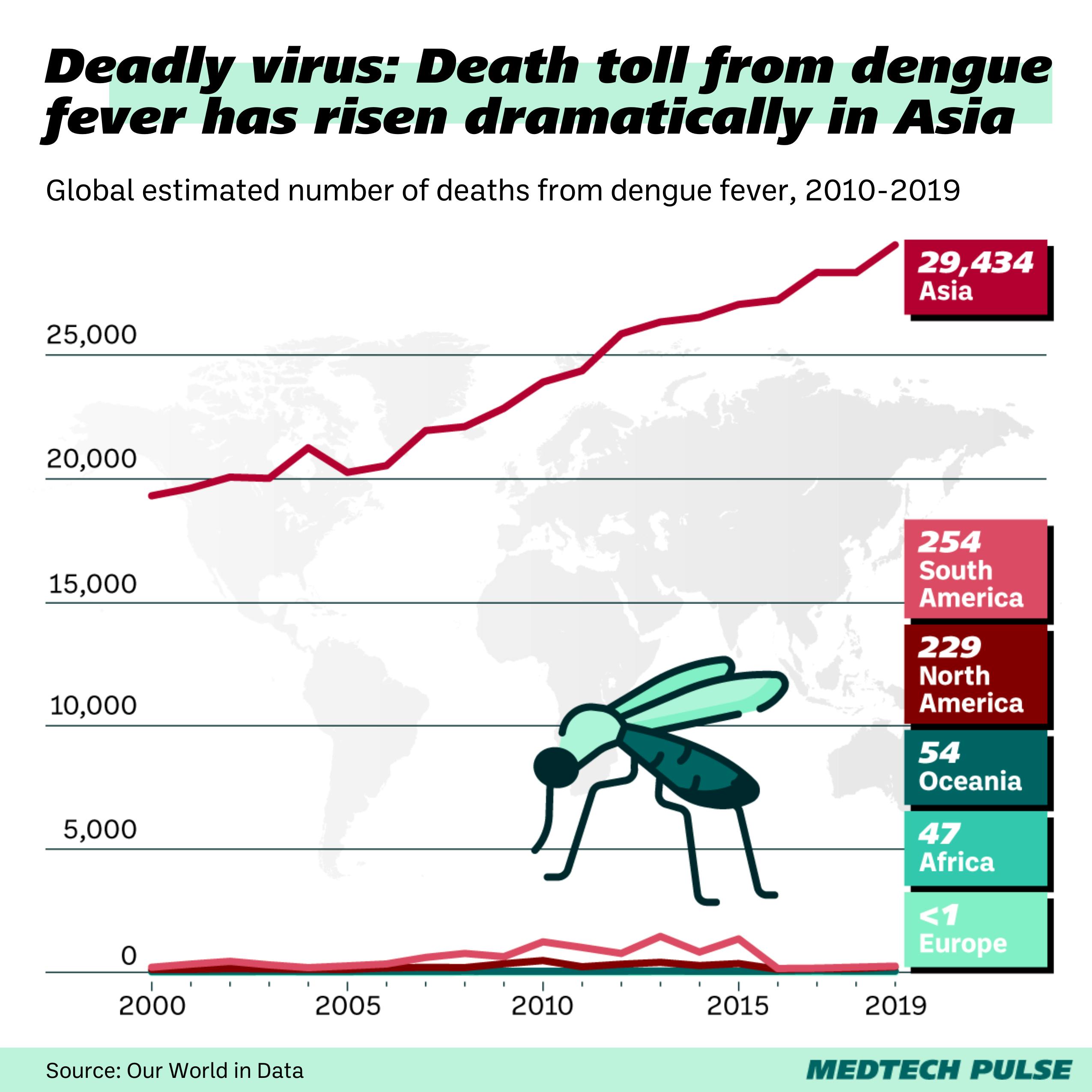This Brazilian startup is fighting dengue with drones
Depending on where you are, that high-pitched buzz in your ear might be a minor annoyance—or a major health threat. In fact, the mosquito is one of the deadliest animals in the world. All because of its ability to spread disease and quickly reproduce.
Brazil is one of the hardest-hit countries when it comes to epidemics of the mosquito-borne disease, dengue fever.
Now, a startup in São Paulo is proposing a new way to fight the dangerous, pest-dependent virus: drones.
Drones vs. virus: How it works
Drones are proving to be a more and more widely-useful public health tool.
We’ve discussed before how remote drone delivery can even be more efficient than traditional emergency response in responding to, for instance, opioid overdose.
Now, Birdview is showing us another public health application of the technology: Sterilizing mosquitoes.
The startup previously used their drones in agriculture, releasing insects on crops that would eliminate pests without the use of harmful pesticides.
But how would releasing more insects help curb an insect-caused problem like dengue?
Birdview’s approach is based on an approach developed by scientists working on insect-borne disease prevention via sterile male mosquito release. By distributing these sterile males of the culprit Aedes aegypti mosquitoes in communities with high disease prevalence, they cut how many mosquitoes could reproduce, ultimately cutting how many mosquitoes could spread virus.
The initial way scientists used this approach was using cars and their own two legs. But it was hard to get the mosquitoes into the areas where they were most likely to breed: spots of stagnant water.
“The challenge is getting into those hidden places,” said founder Ricardo Machado. “It’s rare that Aedes aegypti breeding areas are found out in the open, like on a sidewalk, because when people see them, they destroy them. But with drones, we can get into areas we just can’t otherwise.”
This isn’t the first time drones have been used in this way to fight disease-carrying mosquitoes. A team in Brazil took a similar approach during the 2015 and 2016 zika outbreaks. Another team is running an EU-funded operation in France and Spain.
The question now is not whether the method can be effective, but rather how it can be scaled to target more affected areas. For their part, Birdview is working with more and more insectaries to develop methods that can work in other countries and for other diseases—like malaria.
Other challenges include costs and decentralizing the work.
“We don’t want anybody to have to rely on Birdview or any other company to do this work,” said Machado. “We want to be able to hand them the tools they need so they can be the ones to protect their own communities.”
Our perspective: Treating the symptoms and the root
Today, our world is facing more denge epidemics than ever before in recorded history. Each year, there are between 100 and 400 million cases recorded. This marks an eightfold increase over the past two decades, per the World Health Organization (WHO).
And the global burden of this disease is not distributed evenly.

One of the biggest drivers of the rise in dengue—as with other mosquito-borne diseases—is global warming. With more areas hospitable to mosquitoes thanks to the warming climate, the population of disease vectors grows.
Such a problem with borderless impacts also draws from borderless roots.
We must, of course, treat the symptoms of the problem (i.e., diseases like dengue and zika), which disproportionately affect countries across the Global South. At the same time, we must act to slow and prevent further global warming, which is caused by people and companies across the world.
We’ve said it before and we’ll say it again: As an innovative industry concerned with human health, it’s our duty to work toward solutions to global warming as well. We can’t just put band-aids on its acute symptoms.